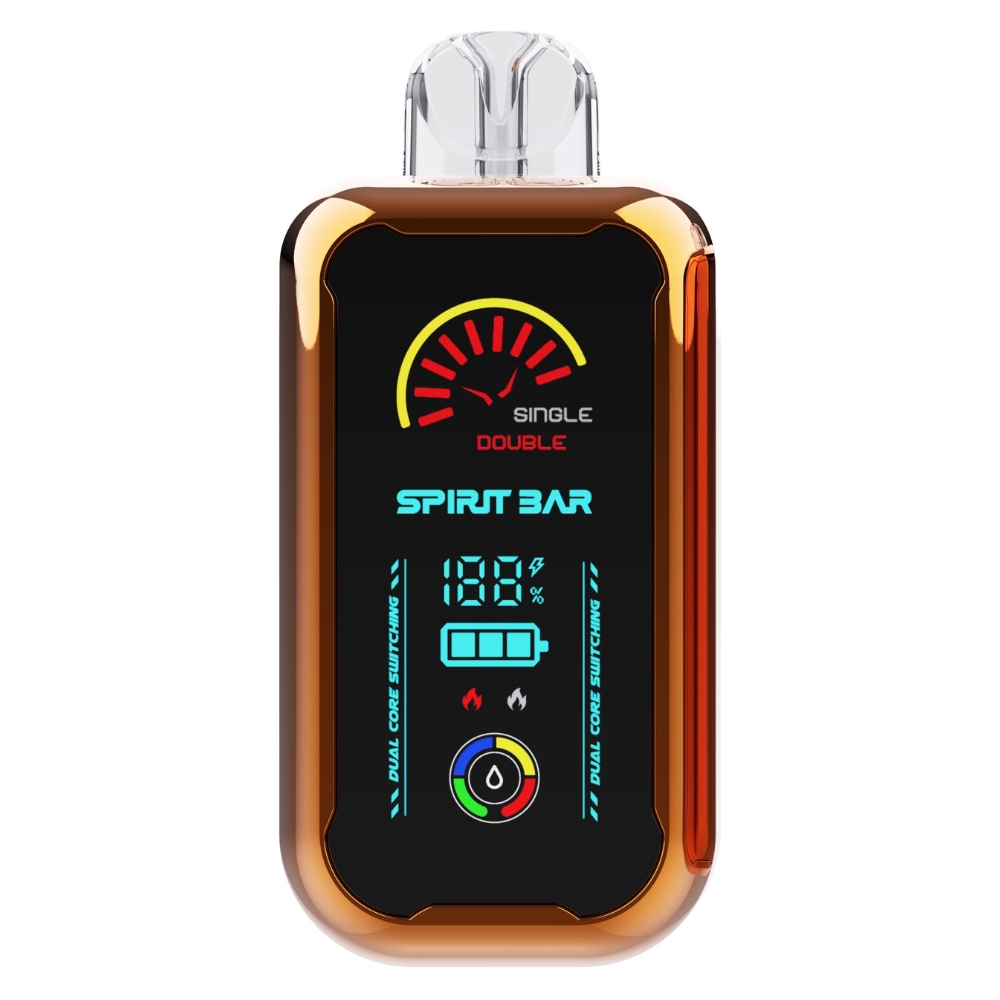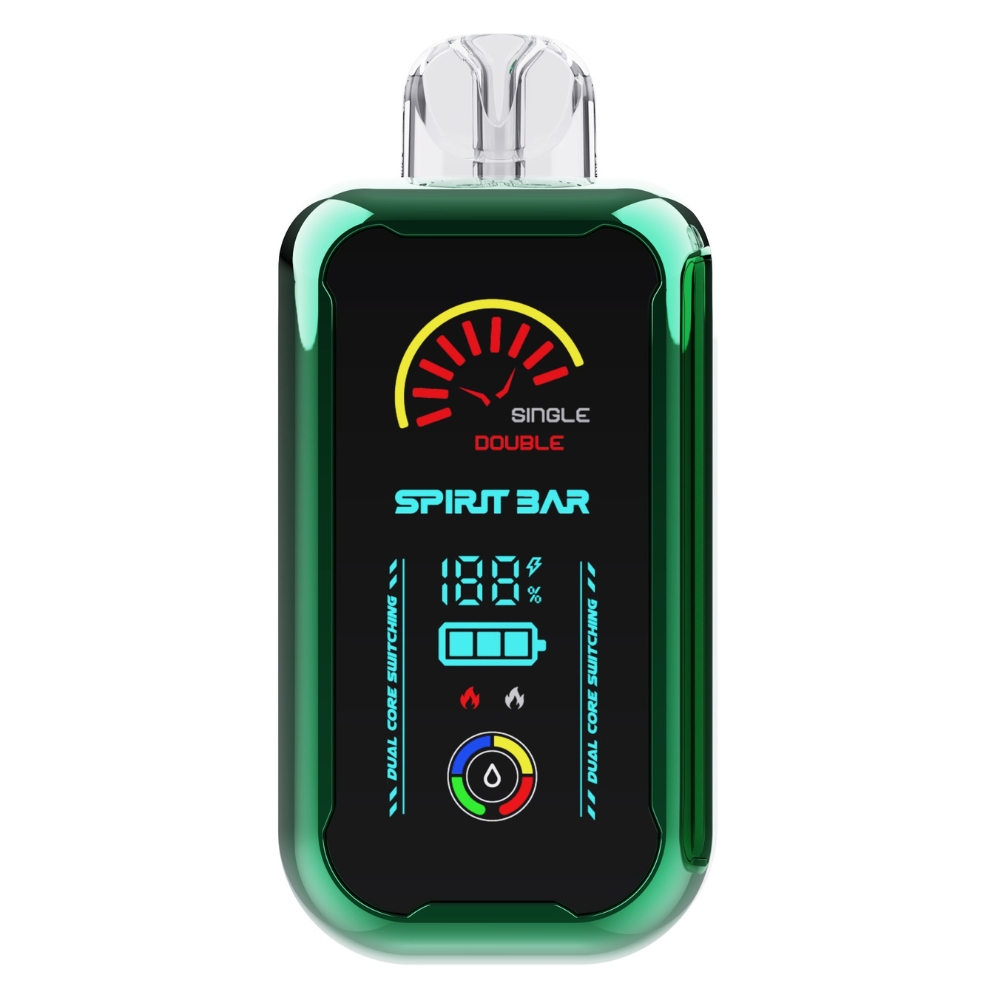How Sensitive Are Vape Detectors? A Quick Guide
If you’re a vaper, you may have encountered vape detectors in public places like schools and office buildings. These detectors are designed to detect the presence of vaporized e-liquids in an area. But how sensitive are vape detectors, and how can you avoid triggering them?
Vape detectors come in various technologies that detect vapor caused by e-cigarettes. Some detectors are more sensitive than others, and they can detect different types of particles in the air. For example, some units are sensitive to high-density large particulates, while others can detect PM2.5 particles, which are tiny particles that can penetrate deep into the lungs.
To avoid triggering a vape detector, you can take several precautions. For instance, you can wait until after or before operating hours to use aerosol products like e-cigarettes. You can also use a designated smoking area if one is available, or step outside to vape. Additionally, you can use a vaping device that produces less vapor and odor, or use a vaporizer that produces no visible vapor.
Understanding Vape Detectors
https://www.youtube.com/watch?v=AEmZvdkgm6M&embed=true
If you’re wondering how sensitive vape detectors are, it’s essential to understand what they are and how they work. Vape detectors are devices that are designed to detect the presence of vaporized e-liquids in an area. They are commonly used in public places like schools and office buildings to prevent people from vaping indoors.
There are several types of vape detectors available, each with different levels of sensitivity. The most sensitive vape detectors are those based on PM2.5 particulate detection, particularly those employing laser scattering sensor technology. These detectors can detect even the smallest amounts of vapor in the air.
Other types of vape detectors include those that use ionization technology, which can detect the presence of charged particles in the air, and those that use optical sensors, which can detect changes in light caused by vapor.
It’s worth noting that vape detectors are highly sensitive and can detect the presence of any active vaping device in a room or area. This means that even if you’re using a discreet vaping device, such as a pod system, the detector may still pick up on the vapor.
To avoid triggering a vape detector, it’s best to avoid vaping indoors altogether. If you need to vape, do so outside or in designated smoking areas. Additionally, it’s important to be aware of the sensitivity of the vape detector in the area you’re in. If you’re unsure, it’s best to err on the side of caution and avoid vaping altogether.
Overall, understanding vape detectors and their sensitivity is crucial if you want to avoid triggering them. By being aware of the different types of detectors available and their sensitivity levels, you can take steps to ensure that you don’t inadvertently set off an alarm.
Sensitivity Levels of Vape Detectors
https://www.youtube.com/watch?v=0zJCyzLpfMg&embed=true
Vape detectors are designed to detect the presence of vaporized e-liquids in an area. The sensitivity levels of vape detectors determine how far away they can detect the presence of vaporized e-liquids. After rigorous testing in laboratories, it has been found that vape detectors are efficiently sensitive up to a certain distance.
According to Triton Sensors, their 3D Sense vape detector is efficiently sensitive up to a distance of 7 feet in all directions, giving a range of a 15 ft diameter. This means that if you are vaping within 7 feet of the detector, it will detect the presence of vaporized e-liquids.
The sensitivity of vape detectors is influenced by numerous factors such as the size of the room, the proximity of the detector to the source of vaping, and the direction, speed, and volume of airflow in the room. As such, it is important to consider these factors when installing vape detectors in a particular area.
It is also important to note that the sensitivity of vape detectors can vary depending on the brand and model. Some vape detectors may be more sensitive than others, while some may have a shorter range. Therefore, it is important to choose a vape detector that is appropriate for the size and layout of the area where it will be installed.
Overall, the sensitivity levels of vape detectors are an important factor to consider when installing them in an area where vaping is prohibited. By choosing a vape detector with appropriate sensitivity levels, you can ensure that it will effectively detect the presence of vaporized e-liquids and prevent people from vaping indoors.
Factors Affecting Vape Detector Sensitivity
The sensitivity of vape detectors can be influenced by various factors. Understanding these factors can help you choose the best vape detector for your needs.
Room Size
The size of the room is an important factor to consider when choosing a vape detector. Larger rooms may require more sensitive detectors to ensure accurate detection.
Proximity to the Source
The proximity of the detector to the source of vaping can also affect sensitivity. The closer the detector is to the source, the more sensitive it needs to be.
Airflow
Airflow in the room can also affect the sensitivity of vape detectors. The speed, direction, and volume of airflow can impact the concentration of vape aerosols in the air.
Type of Detector
Not all vape detectors are created equal. Some detectors are more sensitive than others. PM2.5 particulate detection-based detectors are known to be the most sensitive.
Cleaning and Maintenance
Regular cleaning and maintenance of vape detectors can also affect sensitivity. Accumulated dust and debris can interfere with the detector’s ability to detect vape aerosols.
By considering these factors, you can choose a vape detector that is sensitive enough to detect vaping in your environment.
Types of Vape Detectors and Their Sensitivity
There are various types of vape detectors available in the market, and each of them has different sensitivity levels. Here are some of the most common types of vape detectors and their sensitivity:
PM2.5 Detectors
PM2.5 detectors are one of the most sensitive vape detectors available in the market. They can detect the presence of vapor caused by e-cigarettes, vapes, or e-liquids. These detectors use laser sensors to detect the presence of particles in the air. They are commonly used by hotel staff, landlords, or even for property inspections to confirm vaping or e-cigarette use.
3D Sense Vape Detectors
3D Sense vape detectors are another popular type of vape detector that are sensitive up to a distance of 7 feet in all directions, giving a range of a 15 ft diameter. These detectors use a combination of sensors to detect the presence of vape in the air. They are commonly used in public places like schools and office buildings to prevent people from vaping indoors.
Zeptive Vape Detectors
Zeptive vape detectors are designed to detect the presence of vape in the air and can be used in various settings like schools, hospitals, and offices. These detectors use advanced sensors to detect the presence of vape in the air and can differentiate between vape and other types of aerosols.
Air Quality Monitors
Air quality monitors are not specifically designed to detect vape, but they can detect changes in the air quality that may indicate the presence of vape. These monitors use sensors to detect the presence of various particles in the air, including PM2.5 particles, which are commonly found in vape aerosols.
In conclusion, there are various types of vape detectors available in the market, and each of them has different sensitivity levels. PM2.5 detectors are the most sensitive vape detectors available, while 3D Sense vape detectors are commonly used in public places like schools and office buildings. Zeptive vape detectors are designed to detect the presence of vape in the air, and air quality monitors can detect changes in the air quality that may indicate the presence of vape.
Testing the Sensitivity of Vape Detectors
When it comes to purchasing a vape detector, one of the most important factors to consider is its sensitivity. You want a detector that can accurately detect vaping activity, but you don’t want it to be so sensitive that it triggers false alarms.
Fortunately, many manufacturers conduct rigorous testing to determine the sensitivity of their vape detectors. For example, Triton Sensors found that their 3D Sense vape detector is sensitive up to a distance of 7 feet in all directions, giving it a range of a 15 ft diameter. This means that the detector can accurately detect vaping activity within this range without triggering false alarms.
Other manufacturers, such as Forensics Detectors, have also developed vape detectors with high sensitivity and low-false flag rates. Their Halo Smart Sensor Vape Detector has 12 sensors that detect particulate caused by vape and smoke, as well as carbon monoxide, carbon dioxide, and nitrogen dioxide gas. Meanwhile, their Zeptive Vape Detector has high sensitivity and a low-false flag rate.
To ensure that your vape detector is sensitive enough to accurately detect vaping activity, it’s important to follow the manufacturer’s recommendations for installation and maintenance. For example, Verkada recommends installing their air quality sensor for vape detection on ceilings at a height of 8-9 feet for best air quality measurements. Additionally, you should ensure that the detector is kept clean and free of debris to maintain its sensitivity.
Overall, when it comes to testing the sensitivity of vape detectors, it’s important to choose a detector that is sensitive enough to accurately detect vaping activity while minimizing false alarms. By following the manufacturer’s recommendations for installation and maintenance, you can ensure that your vape detector is working at its optimal sensitivity.
Implications of Vape Detector Sensitivity
The sensitivity of vape detectors can have significant implications for their effectiveness and reliability. Here are a few things to keep in mind:
- False positives: If a vape detector is too sensitive, it may pick up on other aerosol particles in the air and trigger a false positive. For example, Triton Sensors notes that their unit is sensitive to high-density, large particulates, so it’s best to avoid using aerosol products during operating hours to reduce the chance of false positives. False positives can be frustrating and may lead to unnecessary disciplinary action or confusion.
- False negatives: On the other hand, if a vape detector is not sensitive enough, it may miss instances of vaping altogether. This defeats the purpose of having a vape detector in the first place and can give students a false sense of security in their ability to vape undetected.
- Cost: Vape detectors with higher sensitivity levels may come with a higher price tag. It’s important to weigh the benefits of increased sensitivity against the cost and determine what level of sensitivity is necessary for your specific situation.
- Maintenance: Vape detectors with higher sensitivity may require more maintenance and calibration to ensure they are functioning properly. This may add to the overall cost and time investment required to keep the detectors running smoothly.
Overall, finding the right balance of sensitivity for your vape detectors is crucial to their effectiveness. It’s important to consider factors such as false positives, false negatives, cost, and maintenance when selecting and installing vape detectors in your facility.
Vape Detector Sensitivity in Different Environments
When it comes to vape detectors, sensitivity is a crucial factor to consider. Different environments can affect the sensitivity of vape detectors, and it’s important to understand how these factors can impact the performance of your vape detector.
One of the most important factors to consider is the size of the room. The larger the room, the more difficult it can be for a vape detector to detect vape particles. In larger rooms, it’s important to choose a vape detector with a higher level of sensitivity to ensure that it can detect vape particles even at greater distances.
Another factor to consider is the proximity of the detector to the source of vaping. The closer the detector is to the source, the more sensitive it needs to be. For example, if you’re using a vape detector in a small room, it’s important to choose a detector with a high level of sensitivity to ensure that it can detect vape particles even at close distances.
The direction, speed, and volume of airflow in the room can also impact the sensitivity of vape detectors. If the airflow in the room is strong, it can disperse vape particles and make it more difficult for the detector to detect them. In these cases, it’s important to choose a detector with a high level of sensitivity to ensure that it can detect vape particles even in areas with strong airflow.
Finally, the type of sensor used in the vape detector can impact its sensitivity. PID and MOS sensors are the most common types of sensors used in vape detectors. PID sensors are more sensitive and can detect smaller particles, while MOS sensors are less sensitive but can detect a wider range of particles. It’s important to choose a vape detector with sensors that are sensitive enough to detect vape particles but not so sensitive that they trigger false alarms.
Overall, understanding the sensitivity of vape detectors in different environments is crucial to ensuring that they perform effectively. By considering factors such as room size, proximity to the source, airflow, and sensor type, you can choose a vape detector that is sensitive enough to detect vape particles in any environment.
Regulations and Standards for Vape Detector Sensitivity
When it comes to vape detector sensitivity, there are some regulations and standards that manufacturers need to follow to ensure their products are effective and reliable. Here are some of the most important regulations and standards you should be aware of:
-
UL 2683 – This is the standard for smoke detectors and related accessories for use in air-handling systems. It covers the testing and performance requirements for smoke detectors that are used in air-handling systems where the air is recirculated or where the detector is used to control the air-handling system.
-
NFPA 72 – This is the National Fire Alarm and Signaling Code, which covers the application, installation, performance, and maintenance of fire alarm systems and emergency communication systems. It includes requirements for smoke detectors, including those used in air-handling systems.
-
ASHRAE 62.1 – This is the standard for ventilation for acceptable indoor air quality. It provides guidelines for the design, installation, and operation of ventilation systems to ensure that indoor air quality is maintained at acceptable levels.
When it comes to vape detectors specifically, there are no specific regulations or standards in place. However, manufacturers should follow the guidelines set forth in UL 2683 and NFPA 72 to ensure their products are effective in detecting vape and other smoke particles.
It’s also important to note that the sensitivity of vape detectors can vary depending on the specific product and the environment in which it is installed. For example, the 3D Sense vape detector from Triton Sensors is sensitive up to a distance of 7 feet in all directions, giving a range of a 15 ft diameter. Verkada recommends installing their air quality sensor for vape detection at a height of 8-9 feet for best air quality measurements.
Overall, it’s important to choose a vape detector that meets the relevant regulations and standards and is designed for the specific environment in which it will be installed to ensure effective and reliable detection.
Future Developments in Vape Detector Sensitivity
As vaping continues to gain popularity, the demand for more sensitive vape detectors is increasing. In the future, we can expect to see even more advanced vape detectors with improved sensitivity and accuracy.
One area of development is in the use of artificial intelligence (AI) and machine learning algorithms. By analyzing data from multiple sensors and sources, these algorithms can identify patterns and distinguish between harmless aerosols and potentially harmful vaping emissions. This can help reduce false alarms and improve the overall effectiveness of vape detectors.
Another area of development is in the use of advanced sensors, such as photoionization detectors (PIDs) and laser-based sensors. These sensors can detect even lower concentrations of vaping emissions and provide more accurate readings. However, these sensors can be more expensive and require more maintenance than traditional sensors.
Finally, we can expect to see improvements in the design and placement of vape detectors. For example, detectors placed in high-traffic areas or near ventilation systems can provide more accurate readings and help reduce the spread of vaping emissions.
Overall, the future of vape detector sensitivity looks promising. With continued research and development, we can expect to see even more advanced and effective vape detectors in the years to come.


